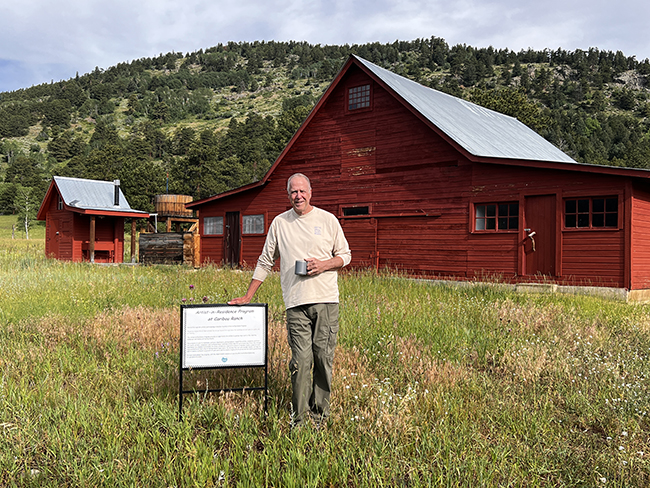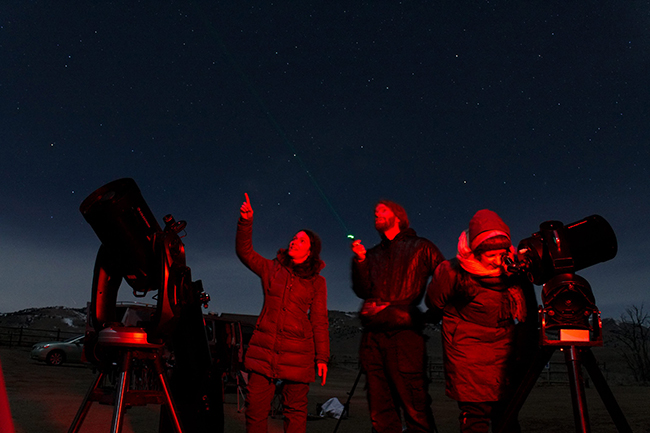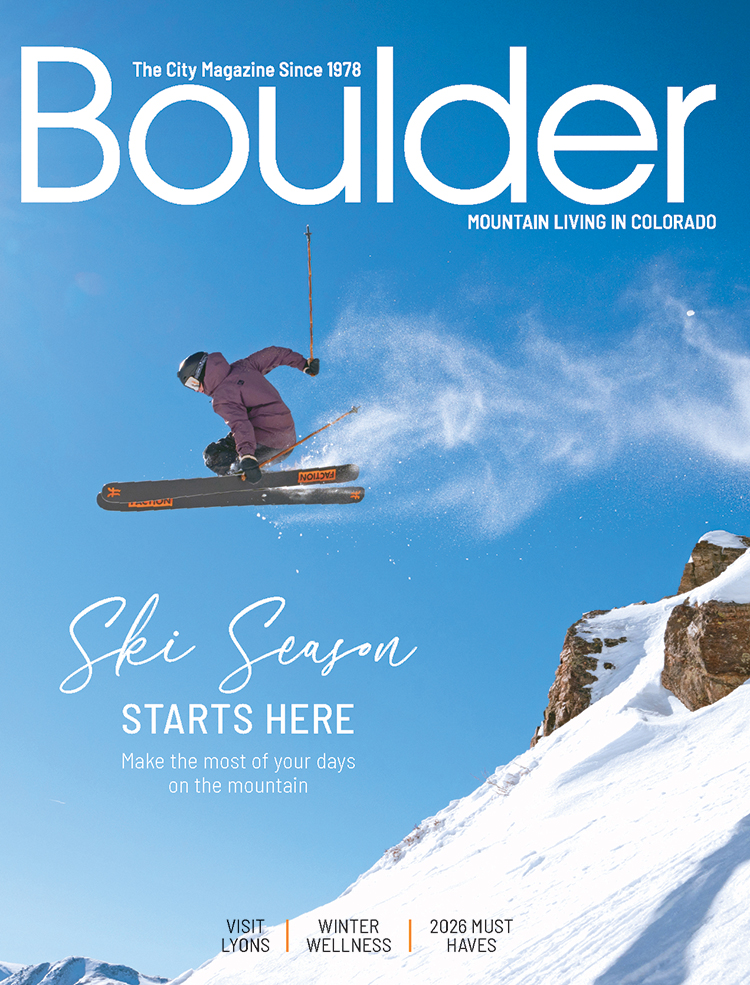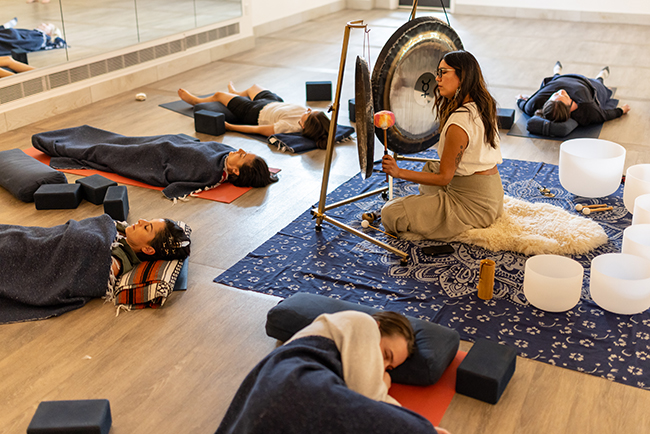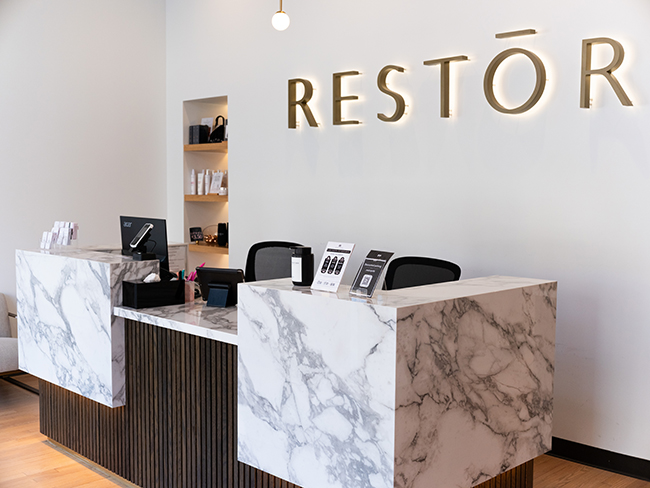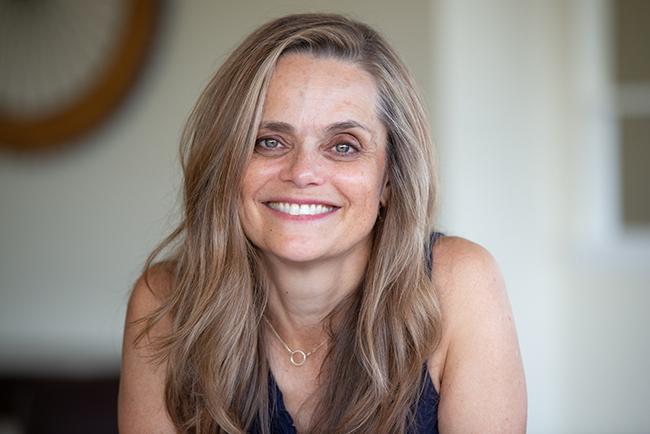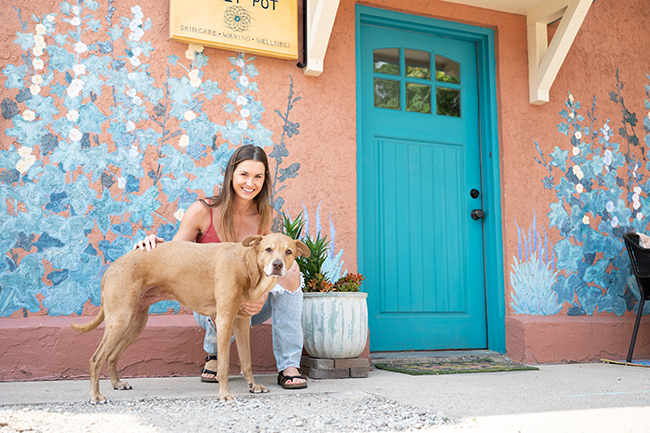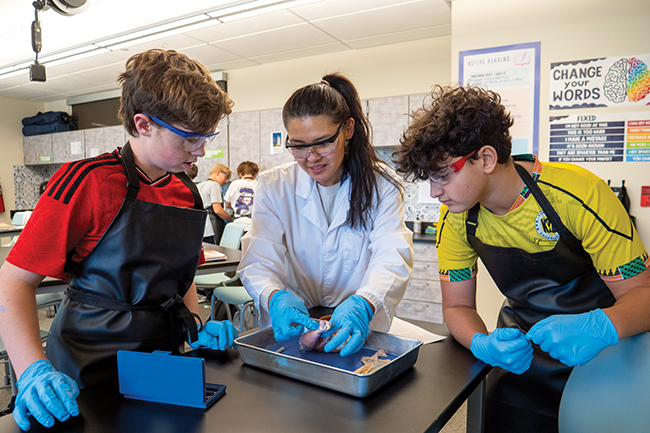Accessible Slopes
03 Feb 2025
Ignite Adaptive Sports sets the bar high for adaptative skiing
By Brad Weismann » Photos by Bonnie Chaim
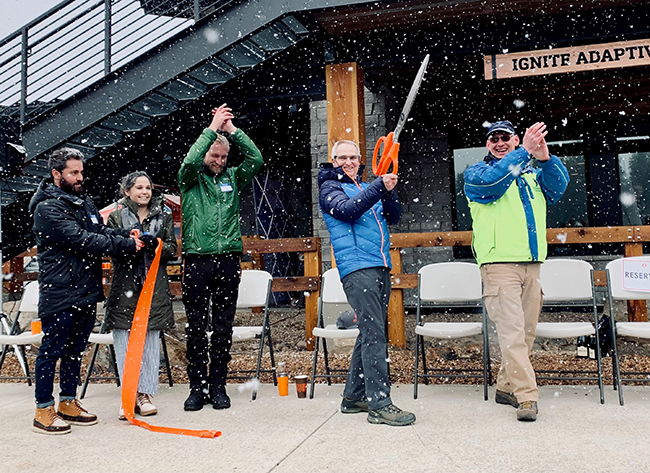
After half a century of seat-of-your-pants activism, Ignite Adaptive Sports boasts a new home and a renewed focus on its mission to get people with disabilities onto the slopes. Ignite was founded as the Eldora Handicapped Recreation Program in 1975, the brainchild of CU Boulder students Nancy Kalinski and Alison Robinson. Initially, run out of the back of a van in the Eldora parking lot; eventually, the program made its way to a used shed, then into a couple of trailers. One setback was a fire in one of the trailers in 2006. The program persevered. Ignite celebrated its anniversary in October 2024 by dedicating a new, multi-million-dollar, 12,000-square-foot building that allows it to execute its mission more efficiently and comfortably than ever before.
“The first time we went, they had some old construction trailer,” says Kevin Sheehan of his first experience in the winter of 2019. “I was thinking, ‘How can they help me?’ But then I got in there, and it’s helped me tremendously.”
Ignite invites outdoor enthusiasts of all ages and disabilities, including physical, emotional or behavioral, to embark on experiences in downhill skiing, cross-country skiing, snowboarding, snowshoeing, sit-skiing and ski biking. Ignite charges a fee for lessons, but scholarships are available. Accessibility is key. In 2008, the organization received its first grant from the U.S. Olympic Committee, which enabled it to start the Disabled Veterans Program. Today, this program continues through the Warfighter Sports Program, allowing Ignite to host group lessons with the Denver and Cheyenne Veteran Affairs organizations.
The program could not exist without volunteers. “I’ve been here, I’m their first full-time paid staffer, in 2015,” says Carol Nickell, executive director of Ignite and a program participant. “We were founded by volunteers, driven by volunteers, forever. They have huge ownership in this program. One hundred percent of our lessons are given by volunteers.”
“Last year, total lessons were over thirteen hundred. We had three hundred and sixty-six students and two hundred and sixty-six volunteers who taught at least one lesson,” says Kevin Wilson, Ignite program manager. “There’s a 150-foot walkway to the lift; you get a two-hour private lesson that includes gear and clothing and a lift pass provided by Eldora.”
Wilson understands firsthand the challenges participants face.
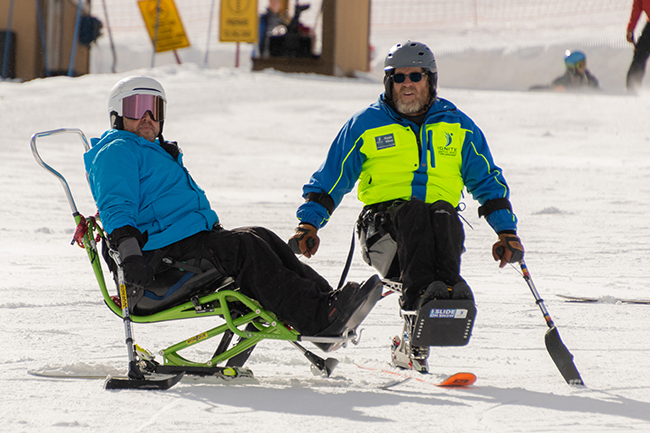
“I started out as a student in 2019,” Wilson says. “I took three years of lessons, and in the summer of 2021, I was hired as the program manager. I definitely didn’t expect it when I started. I told them I wanted to ski the whole mountain and work for them, and that’s what happened. I was paralyzed in a car accident when I was sixteen, and what I’ve been through really helps when it comes to communicating with our clients, their caregivers and our service providers.” He notes that his personal experience helps him connect with apprehensive students.
This compassionate approach addresses an aspect of having a disability that few medical professionals do. “They can give you O.T. and P.T., but they don’t deal with the emotional aspect,” says Sheehan, who survived a stroke 11 years ago. Outdoor activity is therapeutic, promoting neuroplasticity (the brain’s capacity to change and adapt in response to learning, experience and injury), and Sheehan reports feeling returning to dormant parts of his body after some skiing sessions.
Traditionally, the program holds volunteer training sessions that begin in October. “We have three orientation sessions—we had ninety-five people who attended this year,” Wilson says. Training culminates with two days of on-slope training. It’s not only snow sports instructors that are needed. Other volunteer categories include equipment technician, client services volunteer, the ambassador program and special events volunteer.
Brian Kaepplinger, who’s been acting as a service provider for the past five or six seasons, says, “December is the clinic month. I was doing a lot of the sit-ski clinics. Volunteers ride in the skis that students are using so they understand how to teach it.”
There is a wide variety of adaptive equipment that makes disabled skiing possible. The program includes a fleet of devices that enable sight- or motion-impaired clients to carve some turns. There’s equipment for downhill skiing, cross-country skiing, ski-biking, snowboarding and snowshoeing. They even provide jackets, helmets, boots, gloves, socks and sunscreen.
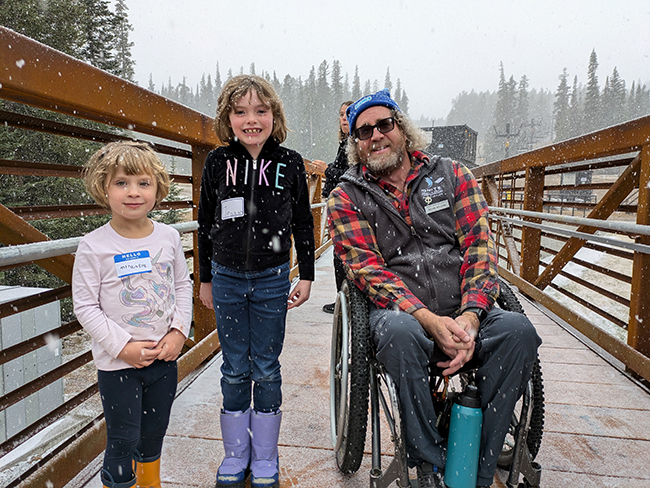
Adaptive equipment is evolving every season. Kaepplinger describes an innovation: the tetra ski. “This December, in the Ski Spectacular at Breckenridge, we were trained on the tetra ski, which is a whole new world,” he says. “It’s a great piece of equipment that can be operated with a joystick or the ‘sip and puff’ method. There are only about twenty or so in the world right now.”
The innovation is not lost on Kevin Sheehan and his wife, Cheryl. “Every time we go up there, they’re working hard to make their equipment more adaptable for Kevin’s needs,” Cheryl Sheehan says. “They keep trying to find ways to make Kevin feel accomplished as a skier.”
He concurs: “It’s a whole community that welcomes you with open arms. Before, the buildings did not do justice to the program. They were nothing like what we have here now. We go any time we can.” It’s a big win for someone who thought his skiing days were over.

